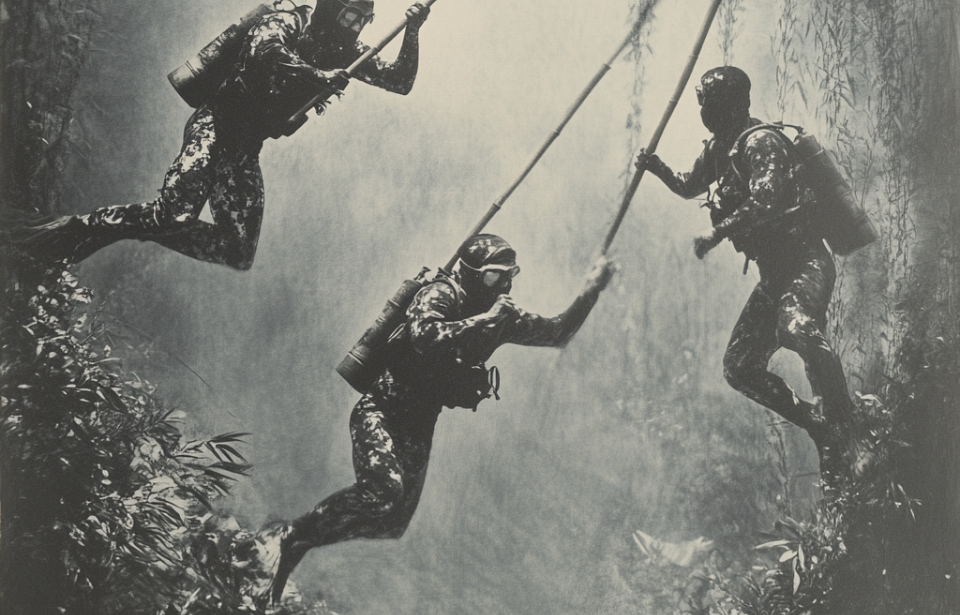As World War II neared its end, both the Allied and Axis powers developed increasingly complex strategies to conclude the conflict. For instance, the Americans outlined Operation Downfall, an ambitious plan to invade Japan’s home islands. Meanwhile, the Japanese implemented innovative defenses, including kamikaze frogmen and manned torpedoes.
Operation Downfall
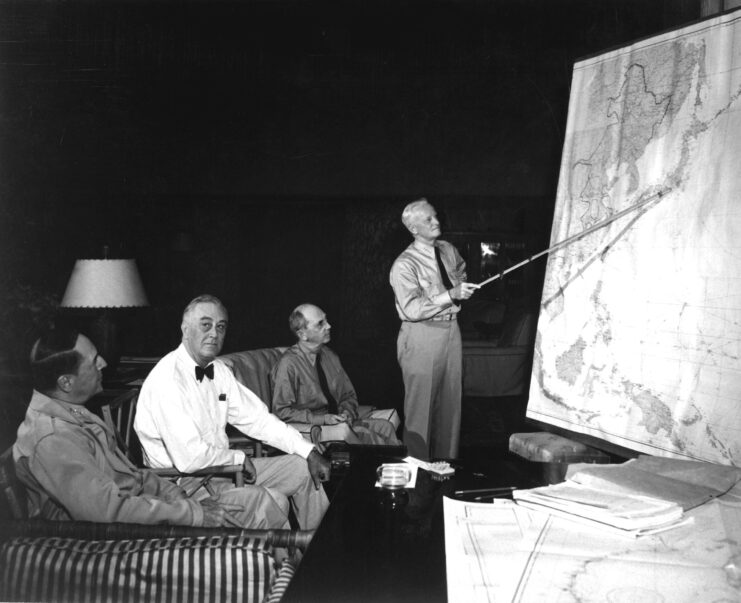
Operation Downfall was the American plan to invade and conquer Japan. It was set to unfold in two phases: Operations Olympic and Coronet. If executed, it would have been a larger amphibious invasion than D-Day.
The operation was scheduled to begin in November 1945, following the end of the war in Europe. The first phase, Olympic, would begin with a massive amphibious assault on the Japanese island of Kyūshū, which would then serve as a staging ground for future troops during Coronet. This second phase, planned for around March 1946, would target Tokyo Bay with an even larger force.
However, the planned invasion was never carried out, as Japan surrendered following the atomic bombings of Hiroshima and Nagasaki. This spared both sides the catastrophic casualties that such an invasion would have entailed.
Training kamikaze frogmen
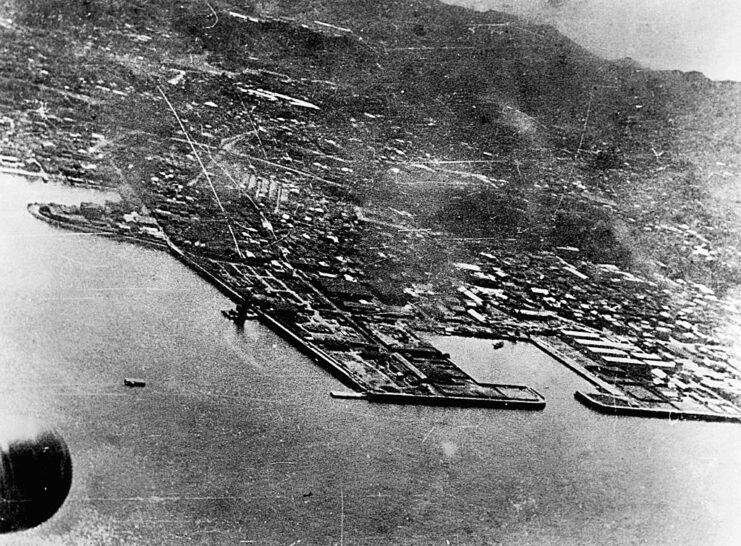
To counter an anticipated Allied invasion, the Japanese introduced the Fukuryu tactic as a defensive measure. Translating to “crouching dragon,” this strategy involved kamikaze frogmen executing surprise underwater attacks on enemy ships.
Captain Kiichi Shintani of the Yokosuka Naval Base Anti-Submarine School in Japan was the first to propose this idea in 1944. Confronted with a shortage of personnel and resources that weakened traditional defenses, Shintani drew inspiration from earlier confrontations like Peleliu.
These operatives would position themselves underwater at strategic points along Japan’s coast, launching explosive nighttime ambushes against enemy forces. This tactic minimized visibility, reducing the risk of detection and retaliation.
Fukuryu attacks
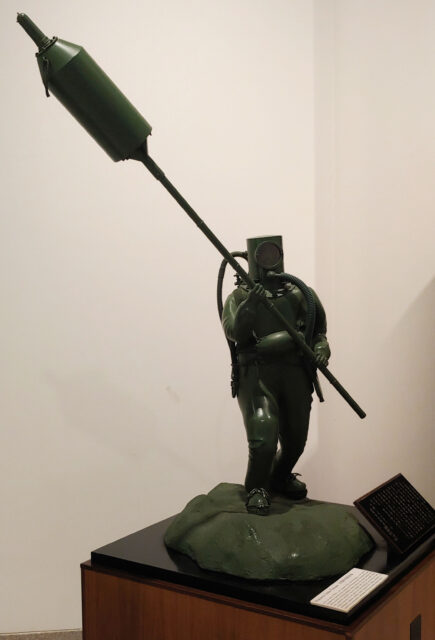
These kamikaze frogmen would surface from their submerged lairs in diving suits, equipped with 16-foot bamboo spears fitted with Type-5 attack mines. Each mine held 33 pounds of explosives and was engineered to explode upon contact with the hull of a ship above.
Several explosives were positioned around these underwater hideouts for the frogmen’s convenience. Given the mission’s nature, those trained for this role were not expected to survive if they succeeded. They faced not only a one-way trip, but also long, solitary hours waiting for the enemy’s approach.
Training the kamikaze frogmen
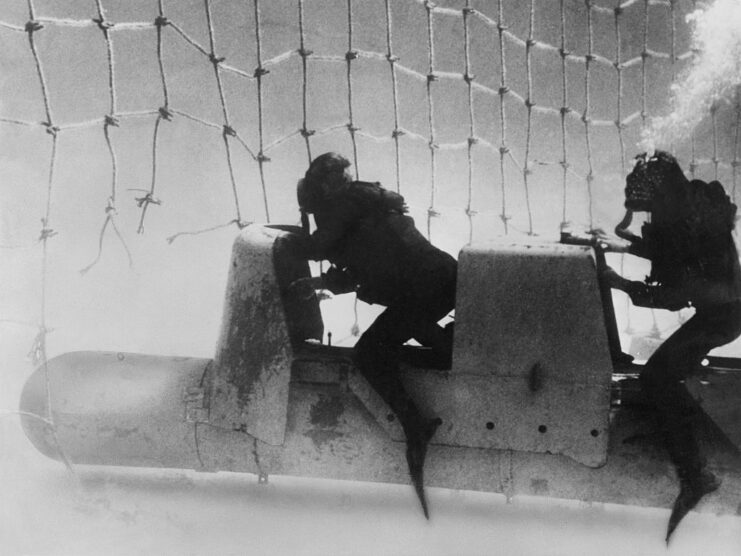
Extensive preparations were made to train 6,000 kamikaze frogmen, which required specialized equipment. Each man was to be equipped with a diving suit, including a jacket, pants, shoes and helmet, along with oxygen supplies and liquid sustenance to last about 10 hours underwater. They would also carry 20 pounds of lead to counteract buoyancy at depths ranging from 16 to 23 feet.
In addition to outfitting the operatives, there was a need to create subterranean hideouts where they could wait for enemy vessels. The initial plan involved constructing large concrete structures above ground that would later be submerged in their designated positions, although this plan was never carried out. An alternative idea considered underwater steel foxholes, but this was quickly discarded due to concerns about interference with nearby explosives.
Despite the meticulous planning by the Japanese to deploy their kamikaze frogmen, the strategy ultimately went unused.
A failed initiative
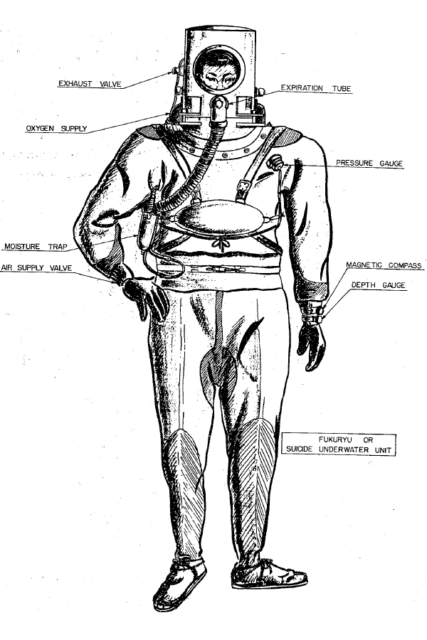
The 71st Arashi were trained at Yokosuka, while the 81st Arashi would undergo training at Kure. Another unit was in the works at Sasebo. However, there were only two battalions fully trained by the time the Japanese surrendered, both with the 71st. The total equaled about 1,200 of the proposed 6,000 frogmen.
Training wasn’t the only thing falling behind, as production also proved difficult. Only 1,000 diving suits were ready at the time of surrender, and none of the real mines were constructed, only dummy ones.
Even though the Fukuryu were never used in combat, many still died during the training. Most of these fatalities were caused by issues with the breathing apparatuses in the diving suits. They were rudimentary, so each diver had to inhale through their nose and out through their mouth into a tank, which would turn the carbon monoxide back into oxygen.
If they mixed the two up, they’d inhale caustic lye and faint while underwater. If any seawater got into the tanks, a mixture was created that, when inhaled, would burn the lungs.
Want War History Online‘s content sent directly to your inbox? Sign up for our newsletter here!
Other divers died when they got tangled in plant life on the ocean floor and were unable to free themselves. Ultimately, no enemy combatants were ever killed in Fukuryu attacks, yet so many trainees were that “they couldn’t keep up with cremation.”
